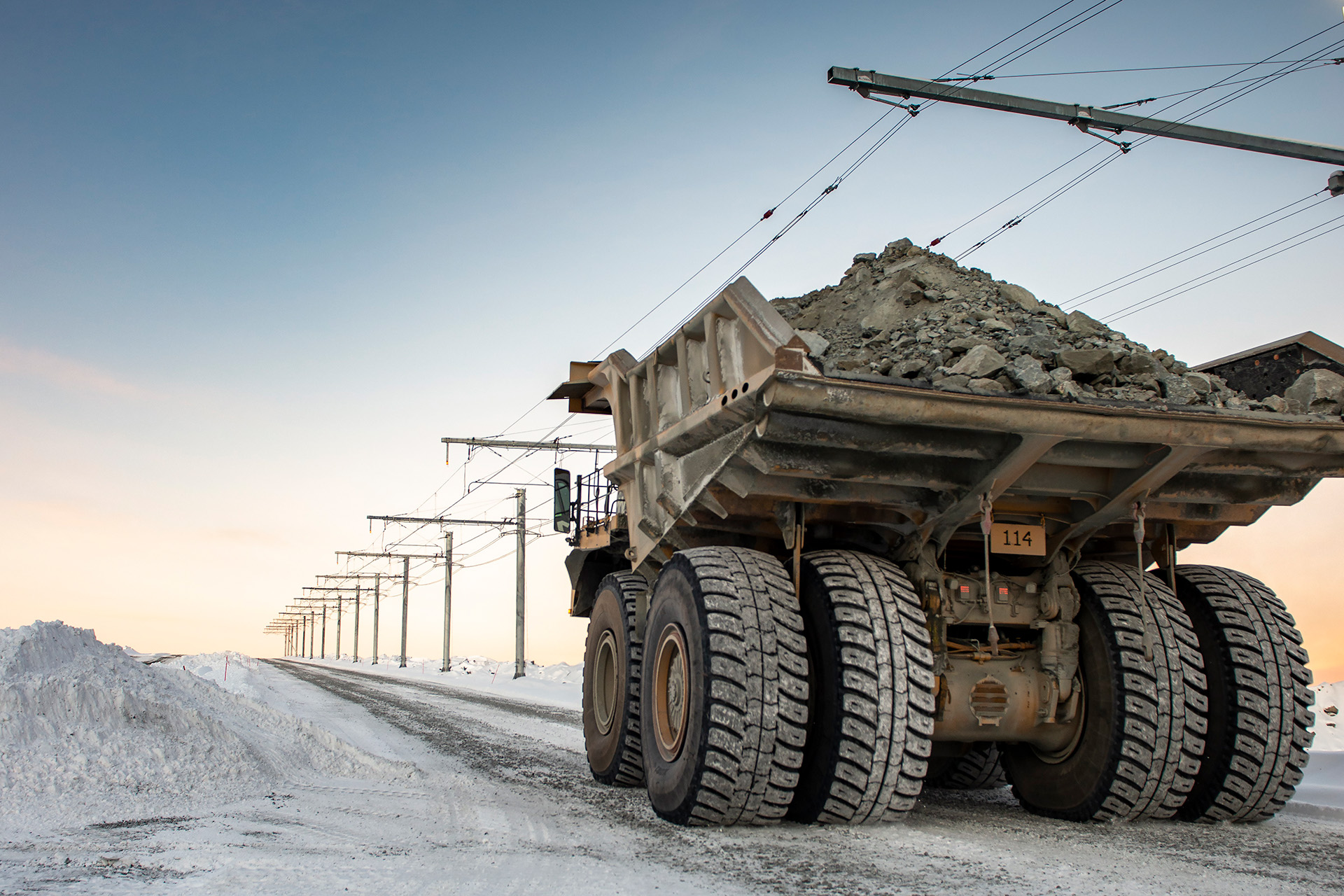Mining remains an essential activity to sustain our modern lifestyle in the 21st century. Most of it, though, happens elsewhere, far from our immediate landscape. Smartphones, tablets, computers, batteries, wind farms, solar panels: virtually every aspect of modern life relies on ores mined from the earth – a situation that has only been intensifying with the green and digital transitions.
Since 2010, the average amount of minerals needed for a new unit of power generation capacity has increased by 50 per cent, as the share of renewables in electricity generation has risen. This is significant, as the mining industry is responsible for up to seven per cent of all global greenhouse gas (GHG) emissions.
To sustain the energy transition, urgent and concerted action is needed to address emissions resulting from the production of metals and minerals. Where is the starting point?
Electrifying a single mining truck eliminates the same amount of CO2 emissions per year as it would take 46,000 trees to absorb. If every truck in every mine were electrified, we could prevent 198,000 tons of CO2 from being released every day.
Decarbonising this sector means accelerating electrification, automation and digitalisation in unprecedented ways. Those three go hand-in-hand and we at ABB believe that electrification is the enabler. ABB Ability™ eMine, launched in September 2021, is an example of what the all-electric mine could look like, from mine to port.

Innovating mining
At the Copper Mountain mine in British Columbia, Canada, diesel consumption from haul trucks is the largest source of GHG emissions. This prompted operator Copper Mountain Mining to partner with ABB to reduce emissions from diesel trucks in open-pit operations at its flagship site. ABB’s task was to deliver an open-pit haul truck trolley assist solution for hybrid-electric vehicles, equipping the trucks with a pantograph to receive external electric power. The trucks not only produce fewer GHG emissions but also travel faster on the ramp, boosting throughput. The trolley control system is connected to the existing ABB automation platform to seamlessly integrate and monitor trolley operations and energy consumption.
ABB also unveiled its mining electric vehicle (EV) fast-charging pilot solution: ABB Ability™ eMine FastCharge, set to become the world’s fastest and only fully automated charging system for mining trucks, offering up to 600kW of power.
Moving the elephant
The decarbonisation of mines brings together multiple sectoral experiences such as electrification, process industry, measurement and analytics, digital and cloud connectivity as well as our decade-old experience in ultra-fast charging of vehicles.
As technologies such as onboard drivetrain components must be mature enough to be compatible or interoperable with charging infrastructure or battery swapping stations, collaborations with EV production platforms, original equipment manufacturers (OEMs) and technology innovators are key. Battery evolution is crucial, too, with requirements for high energy and power density, longer electric range and low costs.
The main challenge when it comes to this type of innovation is “moving the elephant”. Decarbonising mining operations requires profoundly re-thinking connectivity, monitoring, cycle times and safety within a mine whilst collaborating with multiple partners and OEMs to ensure interoperability. Cutting this challenge into bite-sized problems and opening up to collaboration to ensure wide compatibility has been the key to delivering this innovation.
ABB has been closely collaborating with longstanding mining champions such as Boliden, OEMs such as Liebherr or Hitachi Construction Machinery, service providers like Perenti, and technology suppliers such as MEDATech and Stäubli, as well as with digital partners such as AWS.
In Europe, electrification of mining had already been successfully explored by ABB in cooperation with Boliden for mines in Sweden (Aitik) and Finland (Kevitsa).
Can we move the elephant in Europe?
Europe’s near-total dependence on critical raw materials imports is not sustainable. We need to urgently square the circle: revive Europe’s mining industry based on a modern, clean and less intrusive model widely supported by the hosting local communities. We can only do that if we step up innovation efforts – and the promise is there: our technologies and concrete projects show that even elephants can be moved.
Then what do we need to achieve even better solutions? One lesson we learnt during the COVID19 pandemic is that no innovation challenge is insurmountable when companies work together towards a clear common goal and with the broad support of policy makers and society.
Let us translate that to our situation. To deliver innovation that would revive mining in Europe, we need supportive and predictable policy goals to clearly define the challenges to be addressed and reliable criteria – and incentives – for the solutions we should develop for our customers. All three are essential for suppliers like us – and our partners – to point innovation efforts in the right direction and have our investments validated against a reliable long-term regulatory framework. If you want to start moving an elephant, you first and foremost need to know where to.

